
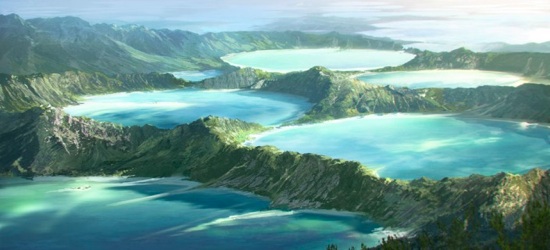
It is more than a millennium into the future, and many centuries since the fall of Earth. Humanity regressed to their past on the once fiery red planet, now lush with emerald forests and sapphire crater-lakes. To the inhabitants of Mars, they were migrants from another world, whose ancestors mastered metalwork and the elements, thus enabling them to sail across the aether. To this day, how Martians came to be remained in legends. There are those told by the faith of Tellusism, those spun by storytellers beside campfires and those wildest tales conjured up by minds on the brink of sanity. Most, however, paid little attention to myths of creation, for whatever seemingly magical feat their ancestors once commanded, it is now lost. To survive and live a fruitful existence means a diligence of the body, mind and faith. But one can wonder, as one always wondered, are there more to the world than what simply meets the eye?
Current story progress: Prologue
The time is year 359, and the place is the Dao Regency, a modest sized but well-respected state on the eastern shores of the Hellas Inner Sea. Today, you are in Meusing, the capital and heart of the Regency. Whether you're a lifelong citizen of Dao, or simply a visitor passing through, recent events here caught your attentions...
...Meusing is a busy city, one filled with dirty secrets and hidden transactions. Bribery and corruption was almost accepted as the city's way of life, almost. It all changed four years ago, when the former Grand-Marshal Khein Qinchowua became the Knight-Regent, ruler of the Regency. Since then, Khein has been adamant in eradicating what he called "injustice". As the arrests became more common and punishments became more severe, so did the people's dissatisfaction. While what Khein accomplished cannot be doubted, for he double the size of the Daonese regiments, arrested corrupt members from the House of Council and the Guilds and absorbed four eastern Hellas city-states into the Regency. Contrary to his accomplishments, Khein nearly tripled the taxes, slowed trade to a halt and provoked the rage of the neighboring Hadrica Highlands. In the end, many citizens are unimpressed, and in the last few months, some have even take to the streets by initiating riots. To complicate matters further, Tamara, the former princess of the Highlands, have taken the throne following her father's death and her elder brother's disappearance. Tamara was quick to disavow Dao, calling Khein a power-hungry tyrant and severing diplomatic relations...
...They say a crisis is near, and you are caught in the midst of it all.
Welcome to Fallen Grace, a low fantasy role-play with dice rolling mechanics. If you decided to read past the introduction, you will find that our story is realism centered, uniquely built and bound together by sets of simple and easily understandable mechanics. Let this warning be my foreword, if you are looking for a magic filled high fantasy, or diverse races of magical creatures, or perhaps books worth of intricate dice rolling, this adventure may not be for you. However, if you're someone seeking an exotic world grounded in reality, with a touch of justifiable intrigues and mechanics designed to augment, not replace traditional story-telling, then you have come to the right place.
Current story progress: Prologue
The time is year 359, and the place is the Dao Regency, a modest sized but well-respected state on the eastern shores of the Hellas Inner Sea. Today, you are in Meusing, the capital and heart of the Regency. Whether you're a lifelong citizen of Dao, or simply a visitor passing through, recent events here caught your attentions...
...Meusing is a busy city, one filled with dirty secrets and hidden transactions. Bribery and corruption was almost accepted as the city's way of life, almost. It all changed four years ago, when the former Grand-Marshal Khein Qinchowua became the Knight-Regent, ruler of the Regency. Since then, Khein has been adamant in eradicating what he called "injustice". As the arrests became more common and punishments became more severe, so did the people's dissatisfaction. While what Khein accomplished cannot be doubted, for he double the size of the Daonese regiments, arrested corrupt members from the House of Council and the Guilds and absorbed four eastern Hellas city-states into the Regency. Contrary to his accomplishments, Khein nearly tripled the taxes, slowed trade to a halt and provoked the rage of the neighboring Hadrica Highlands. In the end, many citizens are unimpressed, and in the last few months, some have even take to the streets by initiating riots. To complicate matters further, Tamara, the former princess of the Highlands, have taken the throne following her father's death and her elder brother's disappearance. Tamara was quick to disavow Dao, calling Khein a power-hungry tyrant and severing diplomatic relations...
...They say a crisis is near, and you are caught in the midst of it all.
Welcome to Fallen Grace, a low fantasy role-play with dice rolling mechanics. If you decided to read past the introduction, you will find that our story is realism centered, uniquely built and bound together by sets of simple and easily understandable mechanics. Let this warning be my foreword, if you are looking for a magic filled high fantasy, or diverse races of magical creatures, or perhaps books worth of intricate dice rolling, this adventure may not be for you. However, if you're someone seeking an exotic world grounded in reality, with a touch of justifiable intrigues and mechanics designed to augment, not replace traditional story-telling, then you have come to the right place.

- Be respectful in the OOC, avoid starting arguments, do not discriminate against other players and keep it free of real life political and controversial discussions.
- You get one warning for breaking the rule above, the second infringement will result in permanent expulsion.
- All forum-wide rules apply.
- Refrain from metagaming, flawless characters and controlling other players.
- The writing standard is advanced, therefore, multiple coherent paragraphs are required in each IC entry.
- Try to post at least once a week. However, don't feel rushed to put in fillers; we're looking for quality over quantity here.
- Plan your multi-user collaborations in the OOC, PM or a third party location; don't clog up the IC thread for quick back-and-forth dialogues.
- Please post a note in the OOC if you're going be absent for longer than two weeks. If you don't notify your absence and fail to post within two weeks of your last IC entry, your character will be killed off.
- While we can't force anyone to write in a certain way, please do remember that the dice rolls are there to make the storytelling better, not the other way around. So please, make decisions in ways natural to your character; don't just do things to pad your stats.
- Please include our official smilies sequence "



 " in your application.
" in your application.

Map
History (WIP)
People
Faith and Beliefs
Regions
Warfare
Organizations
Nature
Magic
Languages
Timekeeping
Climates (WIP)
Economy
Technology
-

[warning=red]The circumference of Mars around the equator is about 13,300 miles (21,343 km), but from pole-to-pole Mars is only 13,200 miles (21,244 km) around. The Mercator projection used for this map is distorted in terms of scale and should not be used for precise measurements.[/warning] -

[fieldbox="The Beginning, green, solid"]
What is now known extended back for little more than 359 Darian years. Prior to the current Darian age, humanity was known to have originated from Earth and possessed advanced technologies enabling them to frequently traverse the aether between Earth and Mars. Curiously, Mars was not what it was today when the ancestors first stumbled upon it. In fact, some say Mars was originally airless, waterless and ten times as cold as the Arctic. Long before the modern time, the ancestors changed it, made it livable for our specimen and other creatures we now live beside.
Most records agree on a devastating conflict that somehow wiped out all lives on Earth and made the planet uninhabitable. Afterwards, the survivors on Mars continued to fight until Tellus' holy armies' triumph and Elysium's surrender. The war was known by several names, most frequently, the Founding Crusade, the Darian War or the Conflict of Regression. Scarcely documented; apparently most advanced technologies and the knowledge to construct them were exhausted in the process.
Year 0 supposedly marks the end of this war, and most people of Mars fell under the banners of Tellusism. It was at that time when human population reached their lowest. But since then, they have recovered. Alongside this new generation, shapes of national borders we know of today were drawn. These people rebuilt from scratch; ushering in the Darian age, the age of a new Mars.
[/fieldbox]
- Tellus, the first Oracle, perished during the Founding Crusade. Her body was laid in a structure on Olympus Mons; the structure is now referred as the Central Temple. Her right-hand, a man called Saint Janus, became the second Oracle and religious leaders of the world.
- Legends have it that a aether-ship containing sick ancestors arrived right after the Darian War; however, no definite records exist to back the claim.
- Elysium kept its Old Earth Religions as conditions of its surrender. Likewise, the Magala Valley was also allowed to preserve their faith for their alliance with Tellus, during the Darian War.
- The Olympus Theocracry, founded in year 0, was the most powerful nation at its time. Its territory stretched from the Central Temple to Tharsis to the Amazonis Coast. It also maintained colonies as far as Dao. It was also allied with people of Syrtis and Cydonia coast.
- Mass purge of singers across the world began 10 years after peace, it lasted more than five decades, with thousands of families wiped out as they contain stronger lineage of singers. Surviving singers would flee urbanized regions into the undeveloped south.
- The Confederation was formed in year 27, originally from nation-states in central Noachia. It continued to expand till this day.
- Tribes of the Hadriaca Highlands banded together under the Ohnen family, a line of elites with many seers in their offsprings. The first Ohnen seer queen accurately predicted an avalanche and led the evacuation of several villages, and the Hadrians bowed to her rule in gratitude. These events occurred in the 29th year.
- The Confederate Diet and the Chancellor's University was established in year 30, the desert oasis they reside on would later become Confederation City. The Army of Hundred Flags was also headquartered in this city.
- The first Syrtic-Elysian war of year 31 saw the Olympus fleet razed by the Elysian Republican Vanguards, Dao and Olympic colonies along the Canal rose up and declared independence. This marked the beginning of the Theocracy's decay.
- After the Olympic authorities were driven from the Canal and Hellas, guilds started to fill the vacuum in 34. Most of these guilds were sponsored by the newly established Daonese government, and they were instrumental in the development of Meusing.
- The first Tharsan rebellion occurred in year 35, seventeen major conflicts would occur in this mountainous region until year 199.
- The first large scaled newspaper, the Borealis Nuntius, was published in year 41 and began distribution along all northern coastal nations. The newspaper published exclusively in Neo-Anglic until year 59. They would later expand inland and became the only continental wide news agency.
- Earliest Magallan colonists settled in the Aonia Desert in 64, however, they were mostly killed by a trino stampede next year.
- The Amazonis Coast followed the example of the Third Tharsan rebellion in year 88, they were put down but eventually splintered in year 132.
- The Confederation, headed by chancellor Andrea, launched an expansion into western Hellas coast in year 95, a similar expansion into Argyre coast was staged in year 120.
- The Cydonia Coast and Isidis Bay was conquered by Syrtis before year 100.
- Refugees fleeing the overpopulated Elysium settled on the Aeolian Coast in year 109, displacing the locals to the Hesperia Plains.
- Syrtic king Hashima was assassinated in Sip'pa, as punishment, the town was flooded on purpose and all inhabitants drowned to death.
- An ancestor satellite fell upon the Nirgali town of Tehidi, killing all 5742 townspeople. The satellite was studied by scholars and revealed as a gigantic mirror; the rebuilt town was named Mirrorfall. The glass from the satellite mirror was prized for its perfect reflections and nearly unbreakable strength.
- The Magala Valley states formed a union and was later defeated by Amazonis Coast sometimes before year 166.
- The Confederation and Syrtis engaged in several minor skirmishes along the Acidalian Sea between year 140 and 160, a treaty was signed in 161.
- The Confederation and most Hellas states remained neutral during the seventh Tharsan rebellion in 163, they were disowned Olympus and formed the breakaway Refutist branch.
- Gunpowder was officially re-discovered by Syrtic miners in Tharsis, they were initially used to put down local Tharsan rebels but later captured to be used against the occupiers.
- The eighth Tharsan rebellion of 198 would finally dislodge their occupiers. Taking this opportunity, Elysium annihilated the resupplying Olympic Navy at Arcadia Point.
- Hadriaca Highlands attempted to expand both north into the Isidis Bay and south to Dao between year 150 and 190, however, they were devastated on both fronts. The expansionist Ohnen royal family was ousted in Hadriaca and replaced by the conservative Kamorsi family.
- The Second Magala Valley Union was formed in year 203, they absorbed the Amazonis Coasts after a long and bloody campaign in 211. The southern realms fell to Aonian tribes in 228, and the union collapsed 36 years later.
- Mamophants went extinct on the Xanthe Penisula sometime around year 220.
- Nirgal Valley nations started to leave the Confederation in year 224, most were independent in 237. The Confederation retook Eastern Nirgal in 240 but failed to do so for the west.
- 249, a series of villages in the Aeolian coast fell ill to a mysterious plague, the outbreak was contained by Elysium, who burned all contaminated people and their land.
- An expedition to the Arctics was taken in year 258, none returned.
-

The people of Mars, just like all faunas there, are gracile. That is, taller and more slight in build compared to their ancestors. Likewise, they are also capable of jumping higher and running in long strides, albeit with only marginal improvements. Some historians theorized that, if a group of Earth human and Martian human stand together, the average Martian would be a head taller than their Earth counter-part.
Racial wise, the majority can be hard to distinguish from each other. Though skin tones can vary, the disparity is insignificant, at least without closer examination. Decades of frequent mixed marriages caused a complexion convergence. In any case, people rarely perceive each other based on their skin color.
When it comes to gender and sexuality, taboos are surprisingly few. All roles can have male and female members; although a couple of jobs still have gender majorities. Religious and political authorities are also accommodating to all sexual preferences. Weddings are still predominately between opposing genders, but those choosing otherwise can also tie their knots.
Martians live up to an average of 50 Darian years, 10 years qualifies for adulthood and 30 years for seniority. In their prime, the average adult rarely suffer from any disease. The Temple teaches the blessing of the ancestors and spirits for their sterile world. Alternatively, critics claim this is simply the result of sanitation improvements across the continent.
-

The religion with the strongest following is Tellusism, a system of beliefs centered around a primordial goddess named Gaia, various spirits and ancestor-saints. In Tellusist lore, Gaia is the goddess of Earth, who suffered from the destruction caused by malicious ancestors. On their homeworld, the ancestors' arrogance caused devastating conflicts amongst themselves, culminating to Earth's destruction. The fall of Earth is recorded as the starting point of the religion; this was when Tellus, the vassal of Gaia and the first Oracle led her companions to Mars. Tellus and her companions are now venerated as the greatest of all ancestors-saints. The spirits are the third class of worshiped entities, they are viewed as reborn aspects of Earth keeping Mars hospitable for its inhabitants.
The Tellusism hierarchy is headed by the Central Temple on Olympus Mons, where the Oracle resides as the highest ranking leader and followed by a council of prophets in the same structure. States adhering to the Central Temple are called the Absolutists, and they elect their local religious leaders to collaborate with the prophets. A splinter group calling themselves the Refutists do not recognize the Oracle's authority, and they form the second largest denomination within. The Refutists derive their name from their neutrality during the third invasion of Tharsis, and most Refutist temples are located in the Confederation and eastern shores of Hellas.
Deus (supreme deity):
- Gaia, mother-goddess of Earth reborn on Mars
Apostolus Sancti (apostle-saints):
- Tellus, the vassal of Gaia
- Janus, the pioneer
- Anulap, the mystic
- Yansa, the battlemaster
- Ebisu, the surgeon
- Plutus, the treasurer
- Raziel, the agent
- Isimud, the speaker
Many other religions are inherited from before the current age, collectively referred to as Old Earth Religions, after the mythical home world of the ancestors. The actual religions within can be similar or vastly different; two of the largest branches are the Abrahamic religions and Asiatic religions. The Central Temple is vague in its relationship with the Old Earth Religions, with interpretations largely made by regional temples, they are treated from heresy to co-official faith and anywhere in between. Old Earth Religions are slowly fading; Elysium and Magala Valley remain as the last strongholds.
The people of Tharsis believe in something different. Rather than worshiping or scrutinizing the ancestors as bygone spirits, Tharsans believe the ancestors are still out there, most of them abandoned Mars but few remained in surveillance. They claim that every Martians exist to be observed by more advanced human elsewhere in the aether. Mars is not a refugee for the survivors of Earth's fall; rather, it is a cage for observing the worst strand of humanity. As such, they presume the world as cynical and isolate themselves in response. They also believed that the core of Mars was significantly altered and hold answers to their being; many Tharsan miners dig immense tunnels just to discover secrets hidden under their mountainous landscapes.
The nomads of the far south follow shamanistic beliefs. While some tribes worshiped the land in similar ways to how Tellusists worship Gaia's spirits, other adhere to more exotic entities. In terms of religious practice, a wide continuum of traditions and customs are observed. For instance, a Malean tribe was seen conducting daily animals sacrifices, while another tribe nearby was strictly vegan. Regrettably, recently expedition to the area found the two tribes fought to death over the life of a rat.
-
Dao Regency:
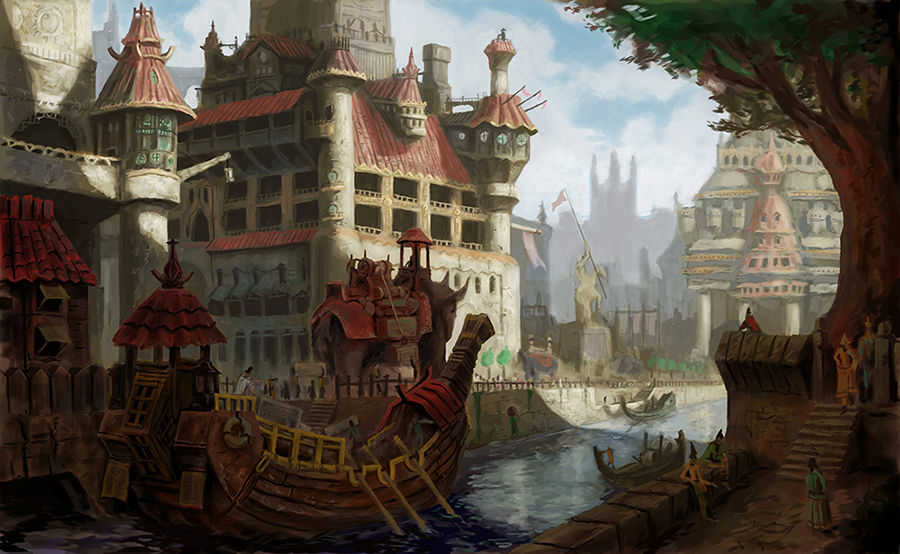
Capital: Meusing; Major Settlements: Qiang Kai (largest inland town, boardering Hariaca), Sunbury (north-west of Meusing, second largest port), Patayia (largest conquered city-state, south of Meusing); Demonym: Daonese; Government: elected absolute monarchy; Head of State: Knight-Regent Khein Qinchowua; Currency: Daonese Pound
A small state situated on the eastern shore of Hellas, Dao Regency is an average nation with above average wealth. Its capital, Meusing, sits on the mouth of a canal connecting between the Borealis Ocean and Hellas, and boasts one of the largest ports in eastern Hellas. Internally, the Daonese government is a strong supporter of guilds, while such policies netted great economic success, it also introduced frequent corruption between guildmasters and politicians. Externally, Dao takes a moderate religious stance, neutrality between Elysium and Syrtis and often, a power broker and trade middleman.
Dao administers a large portion of the Canal.
Hadriaca Highland:
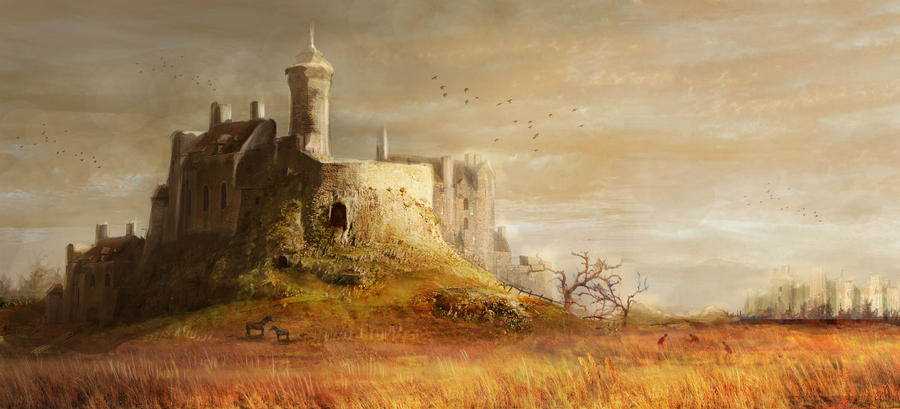
Capital: Khoy'aghak; Major Settlements: Aslan (trade hub, bordering Hesperia), Ushturak (canal town, near Dao), Tuvash (northern city, largest settlement); Demonym: Hadrian; Government: absolute monarchy; Head of State: Queen Tamara Kamorsi; Currency: Hadrian Krone
The Highland is a region of high altitudes, situated near around the valley in which the Canel passes from Hellas to Borealis. Hadriaca is frequently overlooked, despite its strategic location. For much of the Hadrians, daily lives was nothing more than herding sheep or digging in dirty quarries. The Kamorsi dynasty was content with keeping things simple, as the kings and queens of the past trusted Dao with administering the Canal. The last king, Eskand was the first to advocate otherwise. For Dao's new expansionism and Hadriaca's century old stagnation pushed him into urbanizing the vast farmlands and nationalizing parts of the Canal. The late Eskand wished for his elder son to continue his work; however, the heir's untimely disappearance forced the crown onto princess Tamara.
Republic of Elysium:

Capital: Nirvana; Major Settlements: Tholus (inland city), Utopian Cove (north-western port, second largest settlement), Aetherium (headquarter of Old Earth Religious authorities, on the Elysium Mountain); Demonym: Elysian; Government: oligarch republic; Head of State: Premier Sophia Bacharo; Currency: Elysian Rupee
The largest state with an Old Earth Religion majority; Elysium separates itself from the mainland by both geography and ideologies. The Republic, claiming to be the only democratic state of Mars, is in reality ruled by an authoritarian Premier. Who in turn, is appointed by a senate filled with elite oligarchs. Elysium is seafaring nation, with powerful military vessels backed steady merchant fleets. Its seaborne superiority rivaled only by Syrtis. Because of the economic and religious rivalries, Elysium and Syrtis went to war more than a dozen times, two of which within the last decade. The most recent conflict was three years ago, ending with an armistice brokered by Dao.
Majority of the Aeolian Coast is under Elysian influence.
Holy Kingdom of Syrtis:
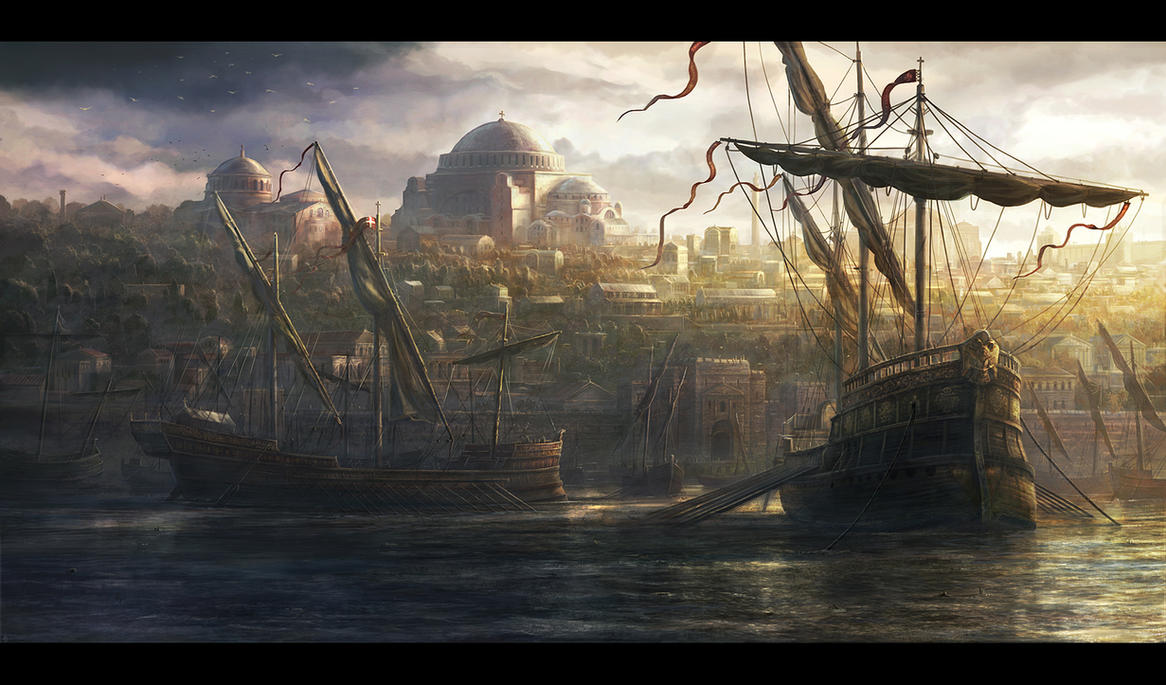
Capital: Assur; Major Settlements: Arabica Prime (northern most city, busy port), Becquerel (largest city of the Cydonia Coast), Daria (trade port near Isidis Bay); Demonym: Syrtic; Government: absolute monarchy; Head of State: King Yeniet Al-Ch'Sire; Currency: Syrtic Dinar
Syrtis lays claim to a large chain of islands, some of which are also claimed by Elysium. To further their agenda, the Royal Syrtic Navy maintains its presence not only around its own maritime borders, but nearly all of the Northern ocean. Religiously, it is a fervent supporter of the Central Temple. Several royal families struggle for power, but the deadlock between them are often resolved the high-ranking clergies. 150 years ago, Syrtis and the Olympus Theocracy formed the Blessed Alliance, controlling more than ⅔ of the northern coasts. Nowadays, the Theocracy's decline meant that Syrtis stands alone in their conflict against Elysium. Nevertheless, they hold on dearly to what they believe to be their divine rights.
Majority of the Isidis bay is under Syrtic influence.
Central Equatorial Confederation:
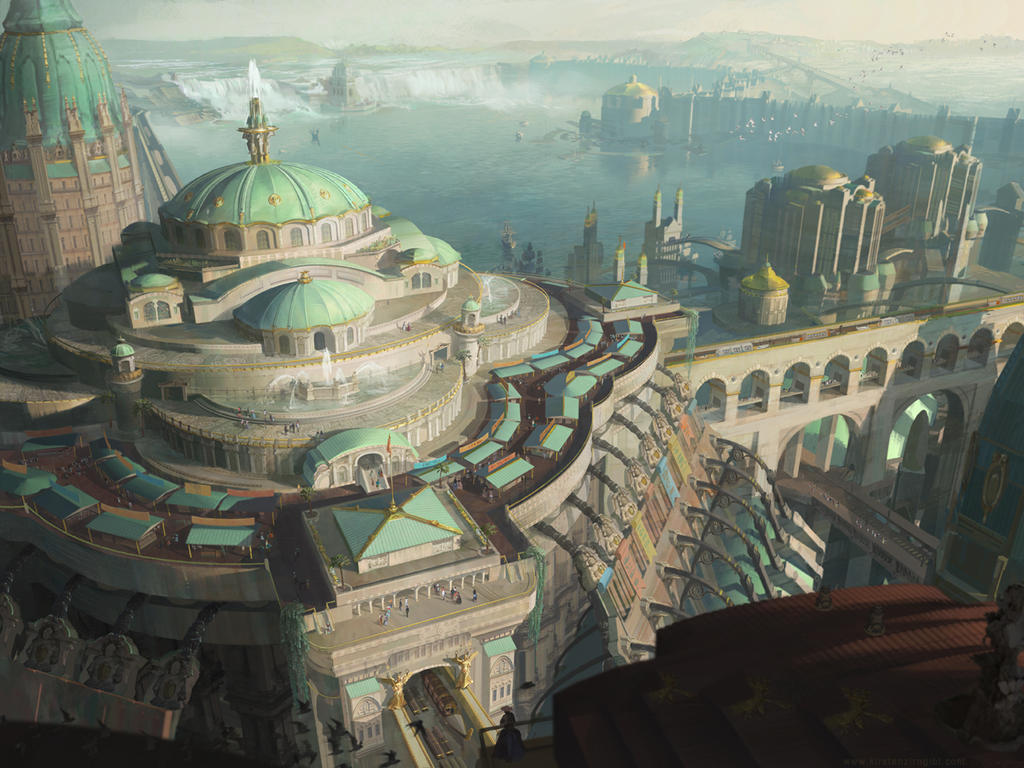
Capital: Confederation City; Major Settlements: Capricornus (southern stronghold), Proctor (transitional hub between Noachia Desert and western plains), Eastreach (biggest west Hellas port); Demonyms: Equatorian or Confederate; Government: supranational union; Head of State: Chancellor Jurikho Tooba; Currency: Equatorian Mark
The Confederation is not a single political entity, rather, it is a collection of smaller nations, constantly shifting web of alliances and betrayals to keep themselves in check. A chancellor, figurehead of the Confederation; is elected by the Diet. The Diet is a gathering of all realms in the Confederation, it is the real power of the Confederation, where money changing hands and political assassinations take place behind week-long debates. Though this bureaucratic system seems inefficient at a glance, the Confederation's influence easily proves otherwise. Its standing military, known as the Army of Hundred Flags, is a collection of forces from all participating realms. This military is capable of fielding over one hundred thousand soldiers, though an army of this size was never actually assembled, Confederate soldiers still outnumber all other forces and generally equipped with higher quality weaponry. The Confederation's territory stretches from Argyre to Hellas to the Northern Ocean; a massive force to be reckoned with.
Western Nirgal:
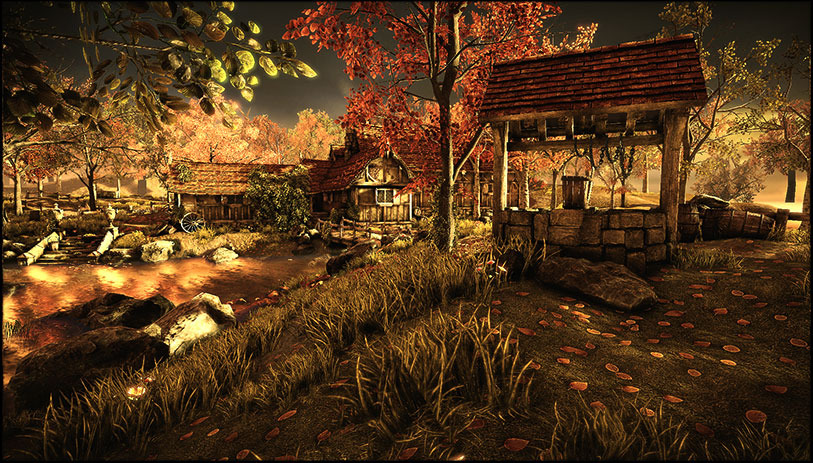
Capital: None (de-jure), Burkand (de-facto); Major Settlements: Mirrorfall, O'bast, Mariner's Rest; Demonym: West Nirgali; Government: military dictatorship; Head of State: Admiral Voarhiena Sinhanaku; Currency: Nirgali Mecc (not to be confused with Magalan Mec)
Since 120, the Confederation had been exerting major influences in the Nirgal region. It didn't take more than a decade for all of eastern Nirgal to became affiliated with the Confederation. However, the Nirgali people of the west refused to submit to Chancellor Andrea and all of her successors afterwards. With around a dozen major settlements scattered from the Argyre coastline to the lumber-rich interior, West Nirgal have resisted many Confederate attempts at conquest. The free cities of West Nirgal denounces the occupation of their eastern counterparts, and frequently sent "volunteers" to aid in uprisings. However, the end of West Nirgal's self rule would not have came from the Confederation. Instead, several waves sea raiders, merchants and homesteaders from the Aonian desert would succeed where a military giant failed. At around 350, most of West Nirgali cities were conquered or bought over by the Aonians. Subsequently, a warlord by the name of Taahery subjugated all of the cities under a single regime. The current ruler, Voarhiena, was the consort of the late Taahery.
Olympus Theocracy:

Capital: Litchoro; Demonym: Olympian; Government: theocratic absolute monarchy; Head of State: Supreme Theocrat Jinru Hao; Currency: Syrtic Dinar, Olympian Drachma (obsolete)
Standing at more than twenty kilometers (over twelve miles) tall, the Olympus Mons houses the central Tellusist Temple halfway up its cliffs. Beneath the mountain, a theocracy of the same name governs the peninsula in which in mountain sits. The Theocracy has little habitable land, with most mountainous steppes dedicated to rice paddies and grass-huts. The Theocracy requires mandatory attendance of prayers, and adherence to a faith other than Absolutist Tellusism are not tolerated. Therefore, the Theocracy claims a uniformly religious population. For any non-believers are punished in the Descend, where they are pushed off a kilometer-tall cliff and into a pit of jagged rock spikes. While the Olympians themselves resemble simple peasants, any knowledgeable Martians would instantly recognize them as the most fanatical zealots ever known.
Commonwealth of Magala Valley
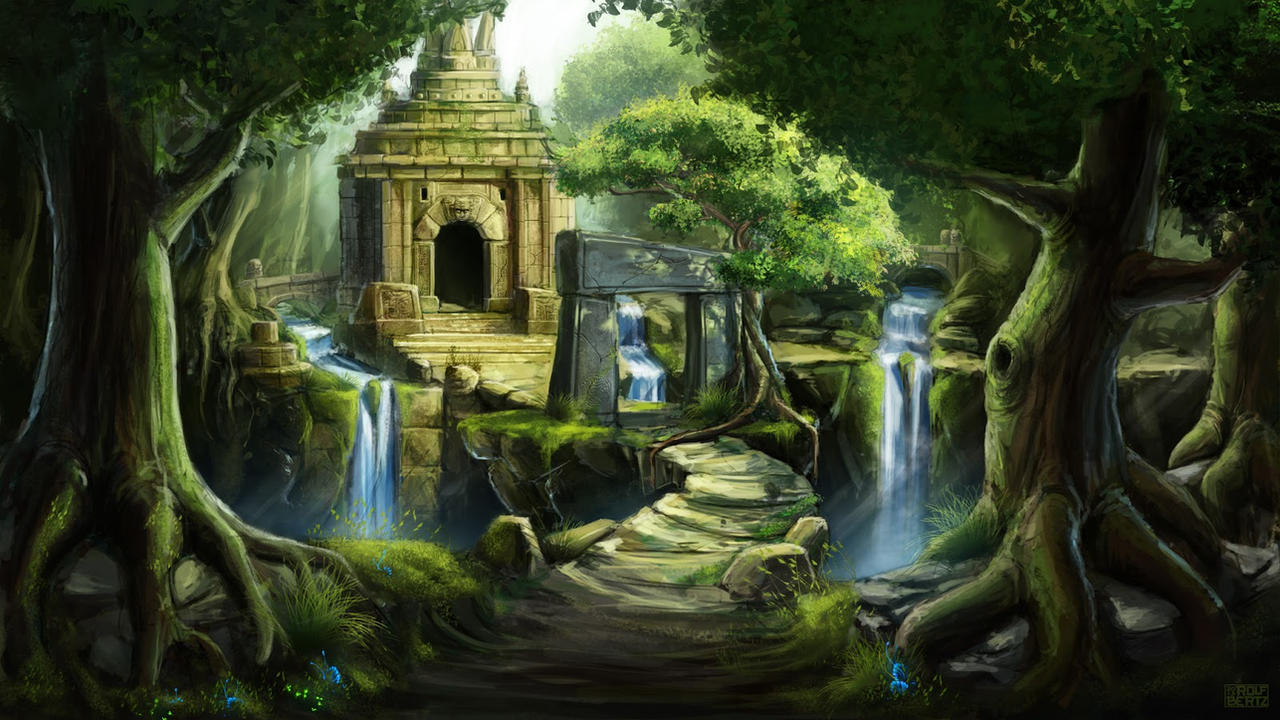
Capital: Altapetal; Major Settlements: Xtljl (Chateliho), Palenique (near Aonia Desert, partial ancestor ruins), El Puente (built around an intact skybridge); Demonym: Magallan; Government: supranational union; Head of State: High King Nor'rengo; Currency: Magallan Mec
Of all habitable lands, the Magala Valley sits on the lowest altitude. Multiple rivers, creeks and canals run through the lowlands, providing a hot, wet and rainforest like environment. Historically, this region was the first to be settled and contains numerous ancestor ruins, some of which are still present today, despite centuries of decay. The Magallan people living there are ultra-conservative, they clung tightly to their Comlang language and Old Earth Religions. Despite their unique religions, they were one of the earliest allies of the Theocracy. They operate on appeasement policies that resulted in their lack of external conflicts.
However, the Magallan states themselves are at odds with each other. The Commonwealth today is the fourth of its kind, it is a decaying power with frequent emigrants.
Hesperia Plain
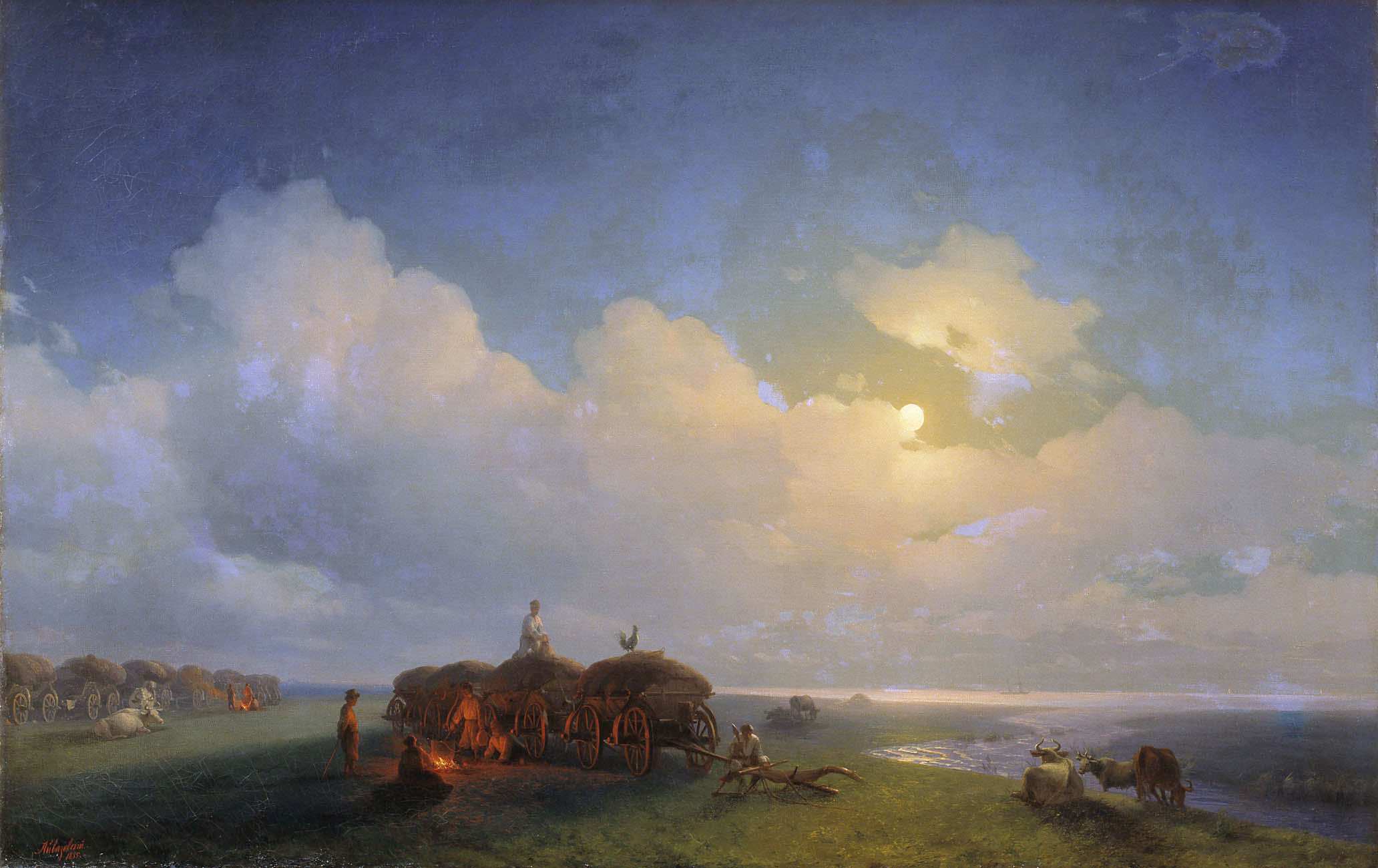
Seperated by steppes from the Aeolian Coasts, and mountain peaks from Hadriaca, the Hesperia plain is home to a surprisingly diverse population. To uneducated outsiders, they are viewed as "barbarians", just like nomads of the Far South. However, the Hesperians themselves reject this false labeling. Hesperian myth say that the proto-Hesperians were in-fact animal handlers from the Magala Valley. They became specialists in Tellus' crusade, but decided to desert partway and settled around the Aeolian Coasts. As such, they were finest animal handlers after the Darian War. Having domesticated not only herds of horses, cows, mamophants, but even trinoes and saberwolves. However, they were soon displaced from a plentiful coastal life by Elysian colonists. Without any united consensus, the Hesperians would migrate up the steppes. As a result of their new homeland's harsh climates, farming practices are now limited and most are forced to undergo seasonal migrations. Nevertheless, the free-spirited and animal-taming Hesperians are valued as beast trainers, messengers and mercenaries.
Tharsis:
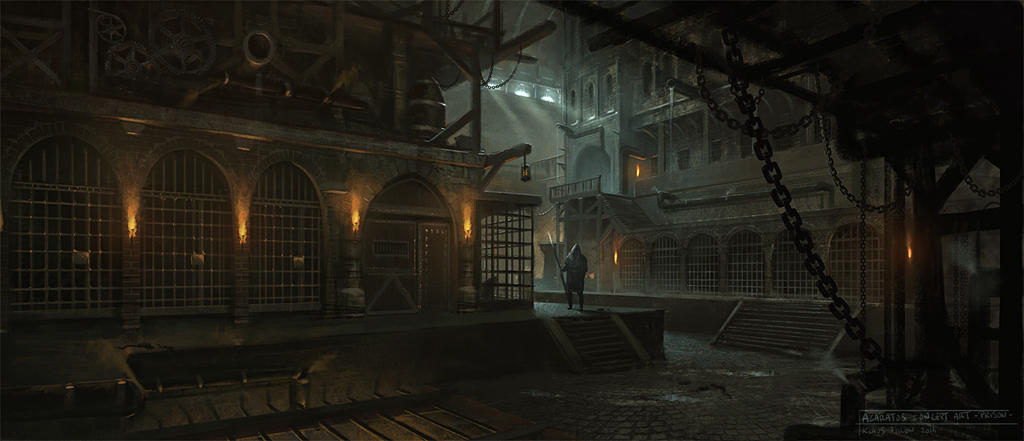
Capital: Sovereign; Demonym: Tharsan; Government: unknown; Head of State: Unknown; Currency: unknown
Since its funding, Tharsis is consistently known for its isolationism. Before Tharsis became the nation it is today, it was constantly under the mercy of foreign powers. Tharsis' minerals, strategic location, and at the heart of it all, nearly intact structures built by the ancestors caused this region be conquered by Elysium, Syrtis, the Confederation, the Theocracy at its height and sometimes, all of them at once. It was 150 years ago when an chieftain rallied the locals, who was more than wary of constant strife they had to live with, to repel all foreigners and established the hermit kingdom known today. Nowadays, Tharsis presents inself an enigma. For few have set foot in the treacherous mountains, and even few returned to tell their stories. From those fortunate enough to make the round trip, they describe Tharsis as an alpine bulwark, guarded by towering peaks and merciless defenders wielding fire lances.
Far South:
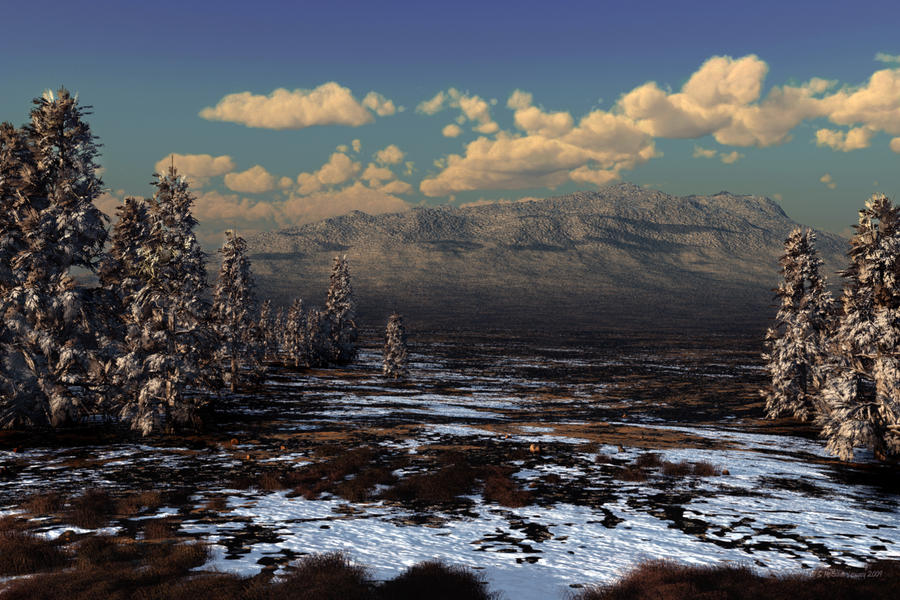
Government: tribal chiefdoms; Currency: barter
The far south has few civilizations, it is divided between scorching deserts and harsh polar winters, a consequence some speculated to be the ancestors' incomplete transformation of the region. Nevertheless, the tundra and desert have their own residents, both human and animals. People up north refer to these area as the Sirenum Tundra, Malea Tundra and Cimmeria Desert, or simply, Sirenum, Malea and Cimmeria. Human living in those wilderness are generally less urbanized than their northern counterparts, they live in nomadic tribes, herd reindeer and frequently struggle just to survive from day-to-day.
While human like the northerners, the southern nomads differ in ways of mentality, morality and worldview. Most families of the north can trace their lineage back to the Darian War, with some even claiming descent from Earth. Researchers found that nearly all southern folks follow their heritage back to roughly 100 years before the Darian War, with absolutely nothing beyond. As if somehow, all of the nomads spontaneously came into existence around the same time.
-

For all intents and purposes, the mighty tools of destruction once wielded by the ancestors are lost to the ages. Whether it be a blessing or a curse could be anyone's guess; but one thing is for certain, wars are fought by the most basic weapons, blood and iron. Knowledgeable Martians know a couple of things about gunpowder; the are volatile, difficult to mix and its uses inconsistent between suicidal experiments and primitive fireworks. Several primitive gunpowder based weapons, such as the fire lance, the hand cannon and the rocket ballista are in irregular use, no military other than the Tharsan army field them en masse. Beside gunpowder, the most sophisticated weapons on Mars are devices such as crossbows and catapults. For most of the time, it would be the lords and ladies on their armored mounts, while their conscripted citizens marching alongside them with blades and shields.
-

[fieldbox="Underground Organizations, green, solid"]
All organizations below are officially banned by a majority of Martian governments.
- Keepers of the Red: A fanatical and outlawed cult dedicated to restoring Mars to its original state; that is, before the ancestors made it habitable.
- Smugglers' Pact: As the name implies, the group harbors smugglers working to transport and distribute unauthorized goods such as intoxicants (ie. glit dust) and ancestor artifacts (ie. fullerene ingots).
- The Bloodless: Executioners-for-hire, essentially a combination of assassins and headsmen. Frequently employed for the "removal" of important figures.
- Order of Scarlet Chivalry: Bloodsport organizers that pits both human and animals in death fights, they are illegal in most nations but nevertheless attract many viewers and gamblers.
- Necromancy League: Tomb-robbers that loot burial sites, sell minced up corpses to taverns and assume the identities of the deceased to cover their tracks. They are also prominent adventurers into ancestors' ruins, braving still active guardian drones in search of relics.
- Speculum: Originally founded by the temple as occult educators, the Speculars were the original handlers of singers and the intermediary between seers and the general populace. However, the proper temple organization was disbanded and the same responsibilities were given to local authorities. What is left of the organization are now witch-hunting thugs; they brainwash people with chemical compounds, root out "singers" and perform muting surgeries on the suspected.
-

Legends told Mars as once barren, cold and covered in toxic red sand. It was the pure ingenuity of the ancestors, who transformed it into the visage of their home. Ancient texts suggested that Mars pulled its inhabitant less than Earth did, and the ancestors somehow made the pull stronger, though it remained weaker than their homeworld. Through the effect this pull, a concept the ancestor called "gravity", made Martians taller than their predecessors on Earth.
The most densely inhabited areas are also ones covered in varying vegetation, such as towering cypresses of the Ares Vallis or resilient ferns in Charitum Montes. However, the far south is less livable, due to desolate deserts and frigid tundras. Martian fauna live beside humans in the wilderness; the most well known species include the five meter tall mamophant, the stone-skinned trino and the iguana, a common reptilian pet.
The entire landmass is connected in a single continent, with the notable exception of Elysium, a north eastern island. Argyre and Hellas are the two largest freshwater bodies, both being fed from nearby glaciers and flow into rivers and eventually, the Great Northern Ocean (Borealis). The Borealis Ocean is a major transportation route for seafaring northern nations, they trade, steal and occasionally war on the high seas. To the far north lies the Arctics, snow covered polar-lands few ever wondered upon; they are also rumored to be the home of the ever enigmatic neon whales.
- Iguanas (small pets and common reptile)
- Red-striped pigeons (messenger birds)
- Gracile horses (common personal mounts)
- Mamophants (rare mounts, untamed species also exist)
- Great oxen (farm animals)
- Trinos (heavyweight herbivores)
- Spirit bears (lone predators)
- Sabrewolfs (social predators)
- Maltese lions (exotic apex predators)
- Malean tundra ape (highly intelligent)
- Neon whales (legendary sea creature)
-

For a lack of better words, the term "magic" describes things uncertain to human. In many ways, the more advanced of the ancestors' relics are classified as such.
The terms "mage" or "wizard/witch" is often misunderstood, misinterpreted and frequently shifted to suit one's own definitions. A widely accepted classification originates from Chancellor's University in Confederation City. The university scholars theorized that less than 1% of all Martians have magical abilities. Amongst these rare people came two primary categories of magic; the seers and the singers.
The seers are most common of all "mages", and a recent study done by the University indicated that they may be as common as one in every one thousand Martians. While the specific abilities of each seer varies, they share a common trait; the capability of predicting future events. Some of the seers rely on weather signs, they immerse themselves in the wilds, paying close attention to the wind and clouds. As such, the seers noted above are frequently employed as meteorologists by wealthy patrons. There are others who are capable of reading minds, or at least, capable of deciphering human thoughts based on observable signs. The above group often find employment amongst city guards, gambling pits and sometimes, con artists. A less common kind can sense minerals and other hidden objects, they claimed to be able to see in a way that normal people cannot. Not matter what they are, the University tend to classify seers, like the singers, into three categories. Most of these mages fell in the novice category, the more gifted and trained are the adepts, and in the extreme rare cases, the masters. Becoming a master-seer requires an extremely unnatural gift and decade long training. To many, mastery in seeing the future means paying steep prices. The individuals with one sense so strong that they lose another altogether; as in the case of some eagle-eyed seers, their hearing was lost completely due to their focus on their vision.
Unlike the seers, the singers do not enjoy public acceptance. Frequently, the singers' abilities are extremely peculiar and capable of extreme destruction, should left unchecked. While difficult to pin down an exact estimate on their numbers, the University noted that there are less than one singer amongst ten thousand average human. Hundreds of years ago, singers are rumored to be just as frequent as the seers. However, a public distrust paired with the Temple's policy caused quick extinction of many singer lineages. Indeed, fear of a singer's power is very justifiable; for one with the mastery of their "songs" can literally crack rocks with a deathly tone. The singers are capable of changing the environment, be it metal, water or wood, with usual sounds emitted from their throats. The closest comparison would be a high-pitched opera performer shattering glass with their high notes. However, the singers are capable of much more. One particularly infamous singer of Sirenum claimed to have created an canyon out of a granite mountain by shouting at it repeatedly, though this record was never proven because that individual went mute from singing in such an unnatural tone. Currently, the three-tiered classification applies to singers; though in reality, one cannot find a legal master-singer in most civilized areas of Mars. Most of the singers today are trained to undertake heavy labor such as mining, woodcutting and canal building. It is important to note that only adept and novice singers are treated as citizens in most nations, where master-singers are viewed as dangerous and are either executed on sight or rendered surgically mute.
-

Continental Creole is widespread in the forms of many dialects, therefore, the standard Confederate variant serves as the lingua franca between varying cultures. Continental Creole itself descends from several old Earth languages. Quikscript is the standard writing system, but different writers may modify it to better suit their dialects.
Other than the Creole dialects, Comlang is the second most spoken language. It is older and descends from different origins than Continental Creole; it is often deemed as archaic. What remained of the language can be found in the Nirgal Valley, Amazonis Coast, Hesperia Plain and Magallan Valley. Out of all areas above, Creole is rapidly gaining popularity, only the Magallan Valley people still preserve Comlang and resist Creole.
Before the fall of Earth, many ancestors spoke a language called English. Earth English is all but extinct; the current legacy lies in Neo-Anglic, the liturgical text of most Martian religions. In addition, Elysian Creole is written in the Latin alphabet instead of Quikscript.
Literacy is inconsistent across the world. In general, education is closely related to wealth. The upper class, religious personnel and successful merchants are the most likely candidates to read and write. For the common people, illiteracy is present. The less fortunate villages often have thousands of peasants unfamiliar with Quikscript; while in the richer cities, even the most lowly citizens can write basic sentences, thanks to reading sessions hosted by the Temple.
Languages highlighted in red are written with the Roman alphabet instead of Quikscript.
- Old Earth languages
-
English (Gregorian age lingua franca)
-
Neo-Anglic
- Temple Anglic (liturgical text)
- Elysian Anglic
- Anglic-Comlang Mix
- Sirenium-Malean
-
Neo-Anglic
- Martian Pidgins
-
Comlang
-
Aonian-Hesperian
- Aonian
- Hesperian
- Nirgal-Argyre
- Nirgali
- Argyrian
- Mariner
-
Magalan
- Valley
- Amazonian
-
Aonian-Hesperian
- Unionist Creole
-
Elysian Creole
- Aeolian
- Nuclear Elysian
- Continental Creole
- Olympic
- Nuclear Olympic (lingua franca before year 100)
- Arcadian
- Tharsan
- Insular
- Naochian
- Confederate standard (current lingua franca; other Naochian dialects were assimilated into the Confederate standard)
- Syrtic
- Central
- Cydonian
- Isidis
- Hellese
- Northern
- Eastern
- Mountaineer
- Olympic
-
Elysian Creole
-
Comlang
-
English (Gregorian age lingua franca)
In IC posts, Creole would be written as English, Neo-Anglic as Latin and Comlang as Greek. - Old Earth languages
-

The current time period is known as the Darian age, named after the calendar in which years and months are tracked on Mars. The first Darian year started with the fall of Earth and migration of the last ancestors to Mars. Before the Darian age was the Gregorian age, termed after Earth's calendar.
With the Darian calendar, 1 Martian year equals to 1.88 Earth years, while each year is divided into 24 months of 27 or 28 days, and each day is about 30 minutes longer than Earth days. Weeks are the same; 4 weeks of 7 days in each month. Hours and minutes are also tracked in the same manner as Earth.
Seasons are present as well, they are of the same rotation as Earth. However, seasons are of different lengths, depending on locations relative to the equator. For the northern hemisphere, springs are one-third of the entire, summer and fall both occupy one-quarter of the year and winter only present for one-sixth of all months. The southern hemisphere has a reverse arrangement of spring/fall and summer/winter. Due to the ancestors' transformations, temperature and weather in most inhabited areas resemble the records of Earth. There are also exceptions to this, the far south and the arctic are incompletely transformed and suffer from climatic extremes.
[fieldbox="Months and Seasons, green, solid"]
The northern hemisphere:
- Spring: Capriconus, Makara, Aquarius, Kumbha, Pisces, Mina, Aries, Mesha
- Summer: Taurus, Rishabha, Gemini, Mithuna, Cancer, Karka
- Fall: Leo, Simha, Virgo, Kanya, Libra, Tula
- Winter: Scorpius, Vrishika, Sagittarius, Dhanus
[fieldbox="Holidays and Festivals, yellow, solid"]
- New Year: Sagittarius 1st
- Treaty Day (end of the Darian War): Capriconus 15th
- Disarmament Commemoration: Aquarius 2nd
- Recovery: Kumbha 10th
- Veneration Week: 2nd week of Mina
- Apotheosis of Saints: Rishabha 4th
- Fall of Earth: Mithuna 6th
- Refugee Remembrance: Leo 21st
- Workspeople Day: Virgo 12th
- Gratitude Feast: Libra 24th
- Oracle Day (absolutist nations)/Martyr Day (refutist nations and Magala Valley)/Resistance Day (Elysium and Aeolian coast): Scorpius 18th
- Last Call: Vrishika 26th
-

Legend:
- Central band (orange/D, red/E): tropical climates, over 15°C/60°F year round and up to 35°C/95°F in summer.
- Inner band (yellow/C): temperate climates, temperatures varies from anywhere between -10°C/15°F to 30°C/85°F
- Outer band (green/B): tundra climates, temperatures can be as low as -30°C/-20°F in winter and high as 20°C/70°F in summer.
- Peripheral: (cyan/A): polar climates, no continuous records exists, but rumors have it that it can be colder than -50°C/-60°F.
- High altitudes (brown/H): only Olympus, Elysium Mountain and several Tharsan peaks are in this category, they are similar to the temperate zone (second band/yellow/B), but with lower maximum temperature.
-

Agriculture forms the backbone of most national economies. This is especially true for the states, near, but not directly, on the equator. Land owners hire workers to farm on their lands, and the workers operate field plows, animal pens and mills. Some of the mostly frequently cultured plants are rice, barley, beans and cabbage. While for the animal farmers, cows, pigs, chickens and sheep dominated the fields. It is common for countries with large, arable lands, such as the Confederation realms and Nirgal, to have social structures tightly bound to land ownership.
For nations with less arable terrains, agriculture tends to take a backseat to other activities. For nations on the Borealis coast, the Northern Ocean can be a great source of wealth. States such as Syrtis have well developed fisheries and shipyards. Indeed, the sea is the most frequent source of transportation. As such, they are also most often fought between competing powers. Beside the well established naval powers resides the privateers, pirates and private contractors looking to make coins on the high tides.
Lastly, the countries caught between the fertile equator and well-traveled coasts rely on alternative economic activities. Those situated on rivers and canals, such as Dao, take full advantage of their locations and build bustling market places for trade. While others, such as the mountainous Tharsis, rely on their rich deposits of minerals for mining and craftworks. These areas are either harder to reach, difficult to live in, or sometimes, both. Though exception certainly exists, most of these nations are less prominent on the continental stage, owing to their smaller population and territories.
But no matter where an individual resides in, he or she will always have different needs to be addressed. Currency is a common occurrence in every place humans live; perhaps not in the furthest of the Sirenish south. Nevertheless, currencies enable exchanges of goods between people, organizations and nations. On the northern and eastern coasts of Hellas, and the Canal joining it with the Borealis ocean, the Daonese Pound is almost universally accepted. The Equatorian Mark is the official currency of the Confederation and also accepted between Argyre and western Hellas. On the northern coast, the Syrtic Dinar and Elysian Rupee are common between traders.
-

For an average Martian human, there are few reasons to travel beyond the border of their settlement. Therefore, walking is by far the most common mode of travel. When traveling with large amounts goods, human powered vehicles such as push-carts and rickshaws are employed. The simplest roads that frequent most rural regions are simply dirt trails cleared of vegetation and other obstructions.
Those with enough wealth and motivations to travel longer distances use breeds of gracile horses for faster speed. The swiftest of all gracile horses are sleek and have deep reserve of stamina, allowing for hour-long continuously sprinting. In addition, horse drawn carts, some with multiple mares pulling, are for ferrying wealth individuals, parties or goods. While back-country riders train their animals for all terrains, the average rider prefer stone, wood or gravel paved roads (and milestones to assist navigation).
Beyond horses, oxen, mamophants and even trinos can be saddled. Bovines lack the speed of horses but make up for it with endurance, making better suited for goods instead of people. Mamophants are rare but can carry a small parties or dozens of barrels on their backs. Just like horses, exotic animals face tolls when traveling on paved roads. But due to their heavier impact, bulls and mamophants pay a premium at checkpoints.
In the far south, paved roads do not exist for its inhabitants. Instead, frequently traveled routes are marked by noticeable wear on the ground. The nomads that call the tundras home might ride horses like their northern counterparts. However, some reindeer herders have abandoned their stallions altogether; favoring either sleds pulled by hearty dogs or deers, or even mount the deers themselves. The motivation for utilizing "exotic" mounts came from purely practical reasons; though deers and dogs lacked horses' grace, they are one of the few animals capable of surviving those unforgiving winters.
Fables tell of wondrous inventions used by the ancestors to move around. There were supposedly the multilayer "skybridge", commuted by floating machines that were the equivalent of a thousand horses. A few surviving skybridges still exist today; one intact skybridge is used in the Magala Valley and another lies in ruins in western Confederation.
On the seas, boats are either powered by rowing, sails or both. The smaller vessels are paddled; these include, but not limited to canoes, skiffs and gondolas. The smaller vessels are used in shallow lakes, near coastal areas and narrow rivers. These boats are easy to build, affordable and can be operated by a crew of one, making it essential for fishers and ferrymen.
Some of the medium sized vessels are dhows, outrigger canoes, sloops and cutters. They can be rigged with compact sails while still remain practical to be rolled by a limited crew. These vessels have decent amount of space to support living on-board and survive mild waves off-shore. Athe the same time, they can still negotiate most rivers and reefs. Therefore, the medium vessels are the most popular compromise between cost, size, capacity and seaworthiness.
For the richest folks, perhaps those belonging to a formidable organization, large sailboats are the only solution to extended sailing. Junks, barques and brigs can support a large crew, passengers and all of their supplies for weeks in the open sea. Most operators of larger ships are docked in the Borealis coast or the Hellas inner sea. One issue with large sail ships are rivers; forcing captains to use canals (ancestor built ones such as the Hellas-Borealis canal or contemporary ones such the Argyre canal).Intoxicants:
- Glit Dust: A shiny, golden-pink mixture of herbal hallucinogens, rare spices and potentially toxic minerals. When sniffed through the nose, effects can include; prolonged euphoria, feeling of invincibility, erectile boost, complete loss of senses and in overdose cases, death. The Glit Dust formula is banned by all Martian governments, where large manufacturing and distribution operations could lead to capital punishment. However, few individuals, mostly the smuggler's guild's associates, retain the monopoly of the highly addictive substance.
- Kafta leaves: A difficult-to-cultivate plant known for its chewable leaves. The Kafta was rumored to be a fusion of multiple Earth plants, designed to produce the ultimate hybrid drug. Surprisingly, standard Glit Dust formula does not employ Kafta, for the mixture would be 100% toxic. Therefore, Kafta leaves are often bundled with each other and retailed for effects like mild euphoria, sensory stimulation and blocking pain and hunger. Roughly half Martian nations outlaw Kafta plants while others monitor it as a controlled substance.
- Sparkler: Red, lotus-like water plant, the sparkler can only be grown in humid fresh water ponds. The drug known as sparkjuice is extracted annually from maturing plant's flowers. The thick liquid is often diluted to increase serving quantity and reduce harmful side effects. When drank or injected into blood veins, the sparkjuice temporarily boosts the user's energy and heighten senses. The Magala valley produces more than half of all sparkler plants, where they are typically exported to foreign authorities and distributed in a controlled manner to seers and singers for performance enhancement.
- Sakau: Sakau plants are prized for their roots, an ingredient that can be extracted into either fluid or powder as alternative to traditional alcohol. The Sakau plant is much easier to grow and harvest when compared to Kafta or Sparkler. The drugs made from Sakau have sedative, anesthetic and amnesic properties. Sakau are rarely banned by authorities but many governments and local organizations extract heavy taxes from Sakau sales.
Light armor/weapon materials:
- Simple: dog/cat/rat leather, pigeon/sparrow feather, iguana scale, slink, softwood
- Regular: ox/deer/goat/boar/bear leathers, hawk/vulture feather, bass scale, hardwood, anthropoid exoskeleton (chitin)
- Rare: trino/mamophant leather, mamophant ivory, shark/alligator scale, ironwood, turtle shell
- Supreme: Liquidgel, neon whale skin
Heavy armor/weapon materials:
- Simple: iron, copper, bronze, tin
- Regular: steel, nickel, cobalt, aluminum, brass
- Rare: silver, lead, tungsten, nakhlite, shergottites, Mirrorfall glass
- Supreme: fullerene, titanium
At the current age, there are very few intact ancestor ruins across the continent. Most of these ruins were looted or decayed in the last 359 years. What remained of the ruins are primarily located in the less urbanized areas.
When exploring, many of these ruins contain guardian drones. They are advanced automatons powered by incomprehensible technology and still possess deadly lethality after three centuries. Experienced explorers noted that nearly all drones were in dormant state until intruders tripped some kind of alarm. Even then, drones still maintain semi-linear patrol patterns dictated by a logical-automate somewhere in the ruin.
- Pygmy: A small flying device powered by four rotors, rarely has weapons attached but equipped with a mechanical eye.
- Vulture: A human-height and carriage-length flying machine, powered by a single, large rotor on top and equipped with heavy weaponry on its stubby wings.
- Enforcer: Encased in titanium armor, the enforcer moves on four mechanical legs and is similar in weight and size to a common bull; often has a weapon mounted in front or on top.
- Outrider: Roughly the size of a shepherd dog, the outrider is either fitted with wheels or tracks; some variants are solely built with mechanical arms while others carry rapid-fire projectile launchers.
Most technologies are on par with 14th century Earth. Though some old, more advanced items survived and exist.
Example technologies anachronous to the 14th century but exists in-universe.
- Buttons
- Glasses
- Matches
- Thermoscopes
- Primitive mechanical clocks
- Newspapers and limited printing press
- Low powered telescopes
- Relatively detailed mapping of the equator and surrounding areas
Last edited:







